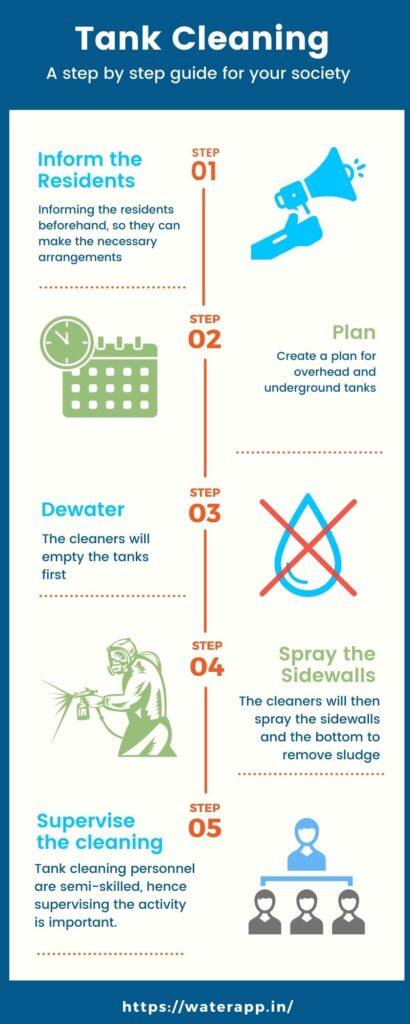
How Often Should I Clean My Water Tank? A Practical Guide

Water tanks play a crucial role in storing clean water for everyday use. However, maintaining these tanks requires regular cleaning to ensure the water quality remains high and the tank functions efficiently.
Many people ask, “How often should I clean my water tank?” In this comprehensive guide, we’ll dive deep into this question, offering detailed advice and practical tips.
We’ll use everyday language and relatable examples to make the content feel like a conversation with a knowledgeable friend.
Common Questions and Concerns
Before we delve into the details, let’s address some of the most common questions and concerns about water tank cleaning:
- Why is regular cleaning important?
- What are the signs that my water tank needs cleaning?
- How can I clean my water tank myself?
- Are there any professional services available?
- How often should I schedule cleanings?
These questions will guide our discussion, ensuring you have all the information you need to maintain your water tank properly.
Why Regular Cleaning is Important
Regular cleaning of your water tank is essential for several reasons:
Health and Safety
Over time, dirt, algae, and bacteria can accumulate inside the tank. This buildup can contaminate your water supply, posing health risks for your family.
Regular cleaning ensures that the water you use for drinking, cooking, and bathing is safe and clean.
For example, imagine using water from a tank filled with algae and bacteria—it’s not a pleasant thought and could lead to serious health issues.
Efficiency
Sediment and debris can affect the efficiency of your water tank.
These particles can settle at the bottom and create blockages in the pipes, reducing water flow.
By keeping your tank clean, you ensure optimal water pressure and prevent clogs. Consider the frustration of turning on the tap and getting just a trickle of water due to a blocked pipe.
Longevity
A clean water tank lasts longer. Regular maintenance helps prevent damage and the need for costly repairs or replacements.
Think of it like maintaining your car—regular oil changes and check-ups keep it running smoothly and extend its life. The same goes for your water tank.
Signs Your Water Tank Needs Cleaning
Identifying when your water tank needs cleaning is crucial.
Here are some telltale signs:
Discoloured Water
If the water coming out of your taps looks rusty or cloudy, it’s a sign that there’s sediment or algae buildup in your tank.
Clean water should be clear and colourless.
Discoloration indicates that contaminants are present.
Unpleasant Odour
A musty or foul smell from your water can indicate the presence of bacteria or stagnant water. Freshwater should have no noticeable odour.
If your water smells off, it’s time to clean your tank.
Reduced Water Pressure
Sediment buildup can clog pipes and reduce water pressure. If you notice a significant drop in water pressure, sediment in the tank could be the culprit.
Imagine trying to take a shower with barely enough water to get wet—it’s a sure sign that your tank needs attention.
Visible Sediment
If you can see dirt or sludge at the bottom of your tank, it’s definitely time for a cleaning. Regular inspections can help you spot this early.
A clean tank should have a smooth, sediment-free bottom.
How to Clean Your Water Tank
Cleaning your water tank might seem like a daunting task, but with the right steps, it can be manageable.
Here’s a step-by-step guide to help you through the process:
Preparation
Before you start, gather the necessary supplies:
- Long-handled brush
- Mild detergent
- Chlorine bleach
- Clean water
- Protective gloves and eyewear
Having everything ready will make the process smoother and quicker.
Drain the Tank
Start by turning off the water supply to the tank. Open the drain valve and let the water flow out.
Ensure you direct the water to a suitable drainage area.
This step removes most of the contaminants and prepares the tank for scrubbing.
Scrub the Interior
Use a long-handled brush to scrub the inside walls and floor of the tank.
A mixture of water and mild detergent works well for this purpose.
Pay special attention to corners and joints where dirt tends to accumulate.
Scrubbing helps remove any algae, sediment, and bacteria clinging to the surfaces.
Rinse Thoroughly
Rinse the tank several times to remove all soap residue.
It’s essential to get rid of any detergent traces, as these can contaminate your water supply.
Use a hose or bucket to thoroughly wash down all surfaces.
Disinfect
Use a solution of water and chlorine bleach (1 part bleach to 100 parts water) to disinfect the tank.
Fill the tank with this solution and let it sit for at least 4 hours.
This process kills any remaining bacteria and ensures the tank is thoroughly sanitised.
After the waiting period, drain the solution and rinse the tank thoroughly.
Refill
Once the tank is clean and dry, refill it with fresh water.
Ensure that the water supply is clean and free from contaminants.
It’s also a good time to check for any leaks or damage to the tank and make necessary repairs.

Professional Services
If you’re not comfortable cleaning the tank yourself or have a large tank that requires special equipment, consider hiring a professional cleaning service.
They have the expertise and tools to do the job efficiently and safely.
Professionals can also offer additional services such as inspections and repairs, ensuring your tank remains in excellent condition.
Choosing a Professional Service
When selecting a professional service, consider the following:
- Experience: Choose a company with a proven track record in water tank cleaning.
- Reviews: Check online reviews and ask for references to gauge customer satisfaction.
- Certifications: Ensure the company is certified and follows industry standards.
- Cost: Get quotes from multiple providers to find a service that fits your budget.
Hiring professionals can save you time and ensure the job is done correctly.
How Often Should You Clean Your Water Tank?
The frequency of cleaning depends on several factors:
Usage
If you use the tank daily, it’s recommended to clean it every 6 to 12 months. Regular use leads to faster buildup of sediment and contaminants.
Location
Tanks located in areas with a lot of dust, pollution, or organic matter may need more frequent cleaning.
For instance, a tank in a rural area with heavy tree cover might accumulate more debris than one in an urban setting.
Water Quality
If your water supply has high mineral content or is prone to contamination, more frequent cleaning may be necessary.
Hard water can lead to faster buildup of sediment, requiring more regular maintenance.
Inspection Frequency
A good rule of thumb is to inspect your tank every few months and clean it at least once a year.
Regular inspections can help you catch issues early and maintain water quality.
Detailed Cleaning Schedule
Here’s a more detailed cleaning schedule to help you stay on track:
Monthly Checks
- Inspect the water quality for any changes in colour, taste, or odour.
- Check for visible sediment or algae growth.
- Ensure the tank’s exterior is free from cracks or damage.
Quarterly Maintenance
- Perform a more thorough inspection, including the tank’s interior (if possible).
- Clean any filters or screens associated with the tank.
Bi-Annual Cleaning
- Drain the tank and perform a full cleaning as outlined above.
- Inspect and clean the tank’s plumbing connections and valves.
Annual Cleaning
- Schedule a professional cleaning service if necessary.
- Conduct a comprehensive inspection of the entire water system.
Following this schedule can help you maintain a clean and efficient water tank.
Keeping Your Content Up-to-Date
Regularly updating your content ensures it remains relevant and useful. Here’s how to keep your guide current:
Revisit and Revise
Revisit your guide every few months to add new tips, update information on professional services, and refresh any images or videos.
For example, you might update the guide with the latest cleaning products or techniques.
Monitor Feedback
Pay attention to reader comments and questions. Use this feedback to refine your content and address any gaps or common concerns.
For instance, if multiple readers ask about specific cleaning products, consider adding a section on recommended products.
Incorporate New Research
Stay informed about new developments in water tank maintenance. Incorporate the latest research and best practices into your guide to ensure it remains a trusted resource.
Refresh SEO Efforts
Regular updates give you an opportunity to refresh your SEO efforts. Reassess your keyword usage, update meta descriptions, and optimise new images and videos for search engines.
By following these tips, you’ll keep your water tank clean and ensure a safe and efficient water supply for your home.
Regular updates also help deepen your connection with readers and maintain your content’s relevance.
Conclusion
Maintaining a clean water tank is essential for health, efficiency, and longevity.
By following the steps outlined in this guide and keeping up with regular inspections and cleanings, you can ensure your water tank remains in excellent condition.
Remember, a clean tank means clean water, which is vital for you and your family’s well-being.
We hope this guide has answered your questions and provided practical tips for cleaning your water tank.
Don’t hesitate to share your experiences and tips in the comments below, and be sure to share this guide with others who might benefit from it.
Happy cleaning!